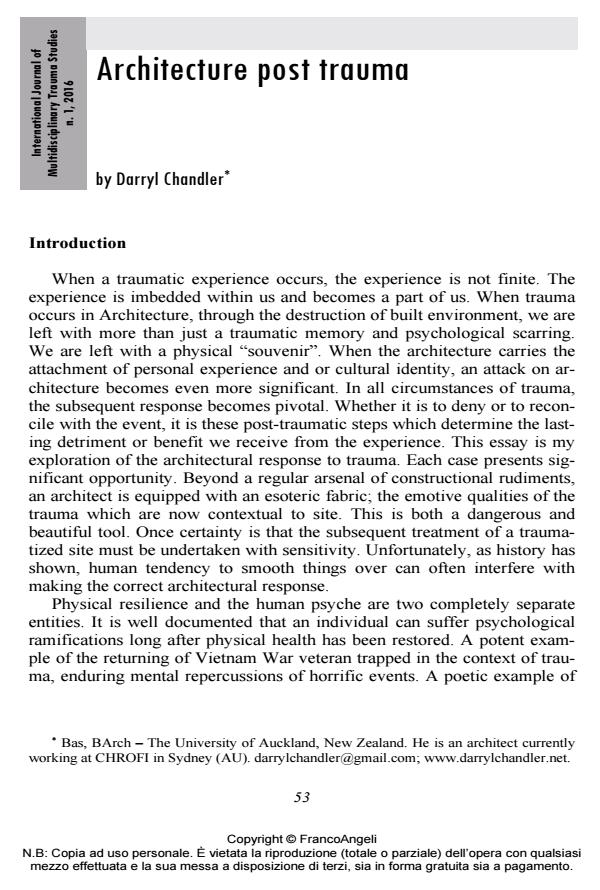Architettura post-traumatica
Journal title INTERNATIONAL JOURNAL OF MULTIDISCIPLINARY TRAUMA STUDIES
Author/s Darryl Chandler
Publishing Year 2016 Issue 2016/1
Language English Pages 8 P. 53-60 File size 174 KB
DOI 10.3280/IJM2016-001006
DOI is like a bar code for intellectual property: to have more infomation
click here
Below, you can see the article first page
If you want to buy this article in PDF format, you can do it, following the instructions to buy download credits

FrancoAngeli is member of Publishers International Linking Association, Inc (PILA), a not-for-profit association which run the CrossRef service enabling links to and from online scholarly content.
When trauma occurs in architecture it leaves more than a traumatic memory and psychological scarring. In fact, when a traumatic experience occurs, the experience is not finite and it is imbedded within us and becomes a part of us. The architecture carries the attachment of personal experience and or cultural identity, an attack on architecture becomes even more significant. In all circumstances of trauma, the subsequent response becomes pivotal. Whether it is to deny or to reconcile with the event, it is these post-traumatic steps which determine the lasting detriment or benefit we receive from the experience. This essay is my exploration of the architectural response to trauma as each case, also examined in this paper, presents significant opportunity as a "future memory".
Keywords: Architecture post-traumatic, trauma, cultural memory.
Darryl Chandler, Architecture post trauma in "INTERNATIONAL JOURNAL OF MULTIDISCIPLINARY TRAUMA STUDIES" 1/2016, pp 53-60, DOI: 10.3280/IJM2016-001006